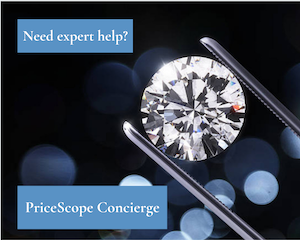All, I have been doing a lot of research and finally pulled the plug on a 1.5 carat AGS 000 heart and arrow diamond. I have research the effect of fluorescence on diamond pretty extensively. It is graded by AGS with medium blue fluorescence with I color VS1 clarity. HCA score is 1.0. When I received it, I am really happy because it really sparkles like a disco light. (ha..)
Today I took it to a highly respected GIA appraiser and he discounted the diamond at a 15% rate due to the fluorescence. A lot of sites including PriceScope are stating a 0% to +2% premium due to medium blue fluorescence on a I-color diamond. In addition the GIA appraiser also stated that fluorescence would cause light trajectory that enters the diamond to disperse/change. Thus fluorescence essentially voids the purpose of getting the highest cut grade diamond since light will not be reflected in the optimum manner.
I checked all over the internet and I still cannot find article that mention this negative effect of fluorescence on light reflection. Could someone please shine some light regarding this topic? Plus is medium fluorescence really cause a diamond's price to discount by 15%? Based on his appraised value, I am definitely overpaying even by buying my engagement ring on the internet. Help will be very much appreciated, thanks.
Today I took it to a highly respected GIA appraiser and he discounted the diamond at a 15% rate due to the fluorescence. A lot of sites including PriceScope are stating a 0% to +2% premium due to medium blue fluorescence on a I-color diamond. In addition the GIA appraiser also stated that fluorescence would cause light trajectory that enters the diamond to disperse/change. Thus fluorescence essentially voids the purpose of getting the highest cut grade diamond since light will not be reflected in the optimum manner.
I checked all over the internet and I still cannot find article that mention this negative effect of fluorescence on light reflection. Could someone please shine some light regarding this topic? Plus is medium fluorescence really cause a diamond's price to discount by 15%? Based on his appraised value, I am definitely overpaying even by buying my engagement ring on the internet. Help will be very much appreciated, thanks.



300x240.png)